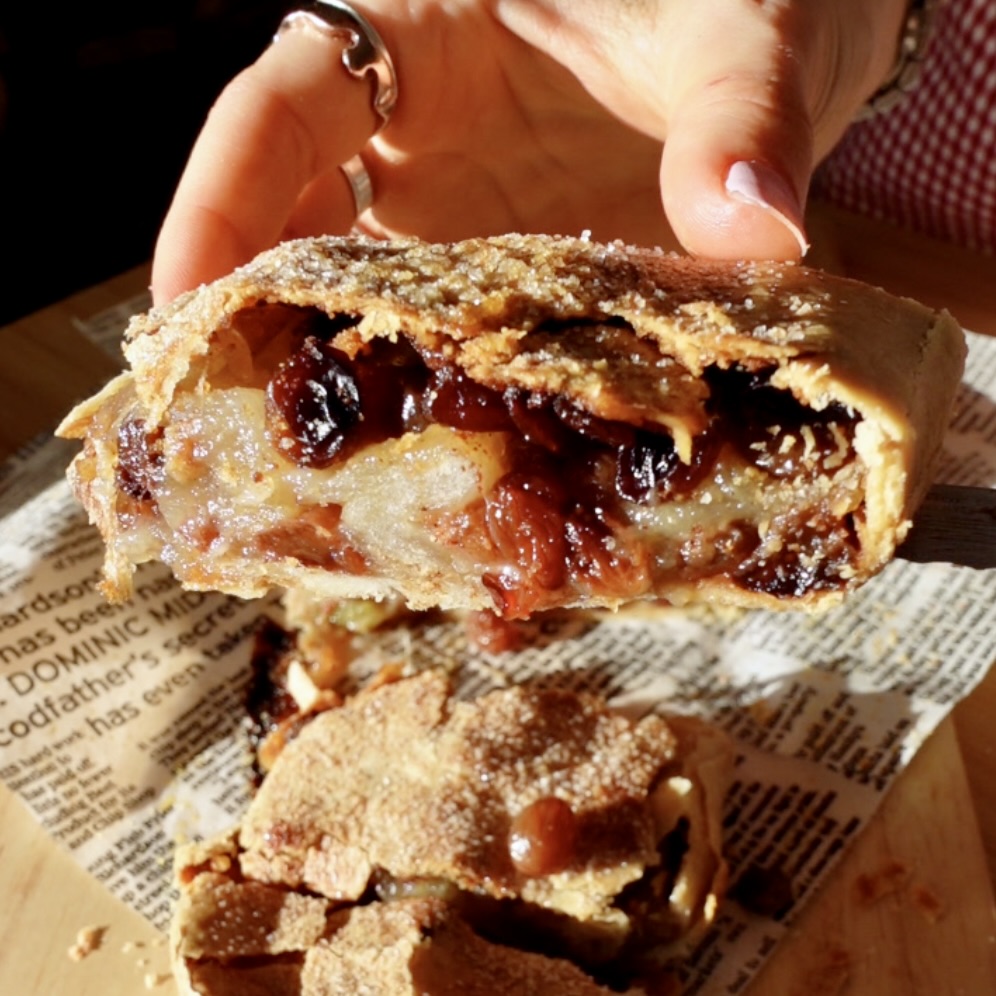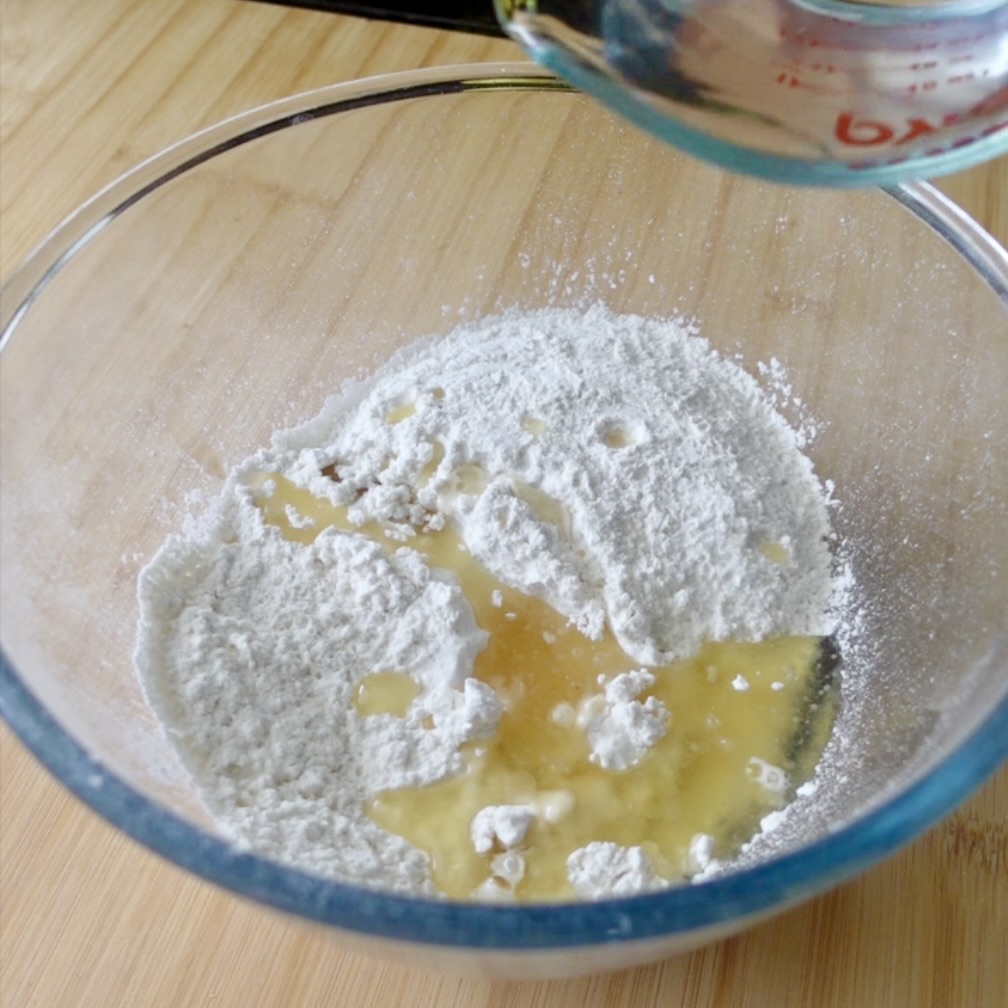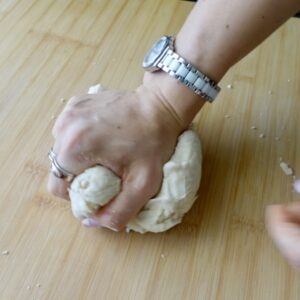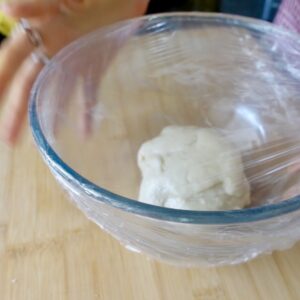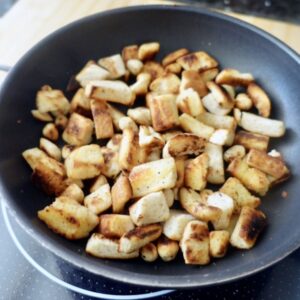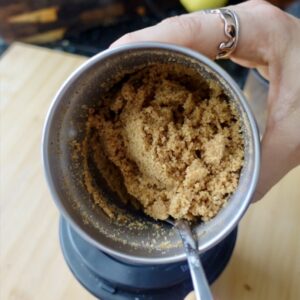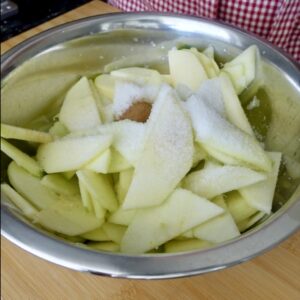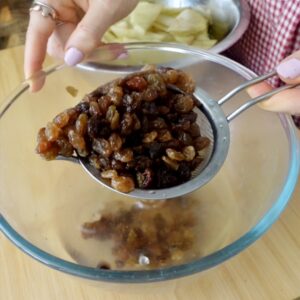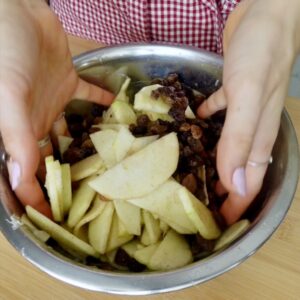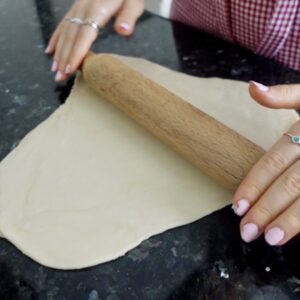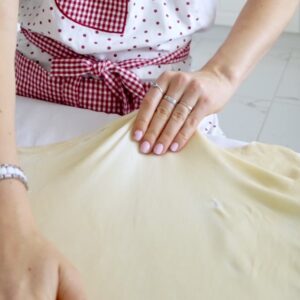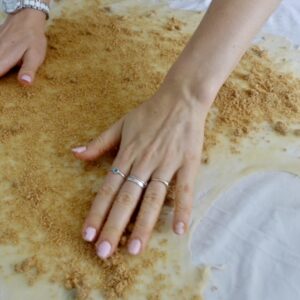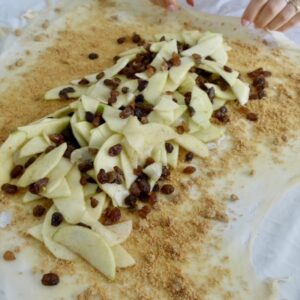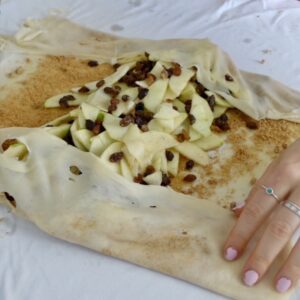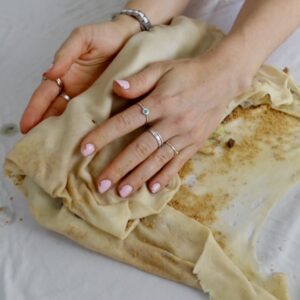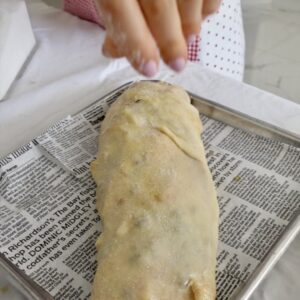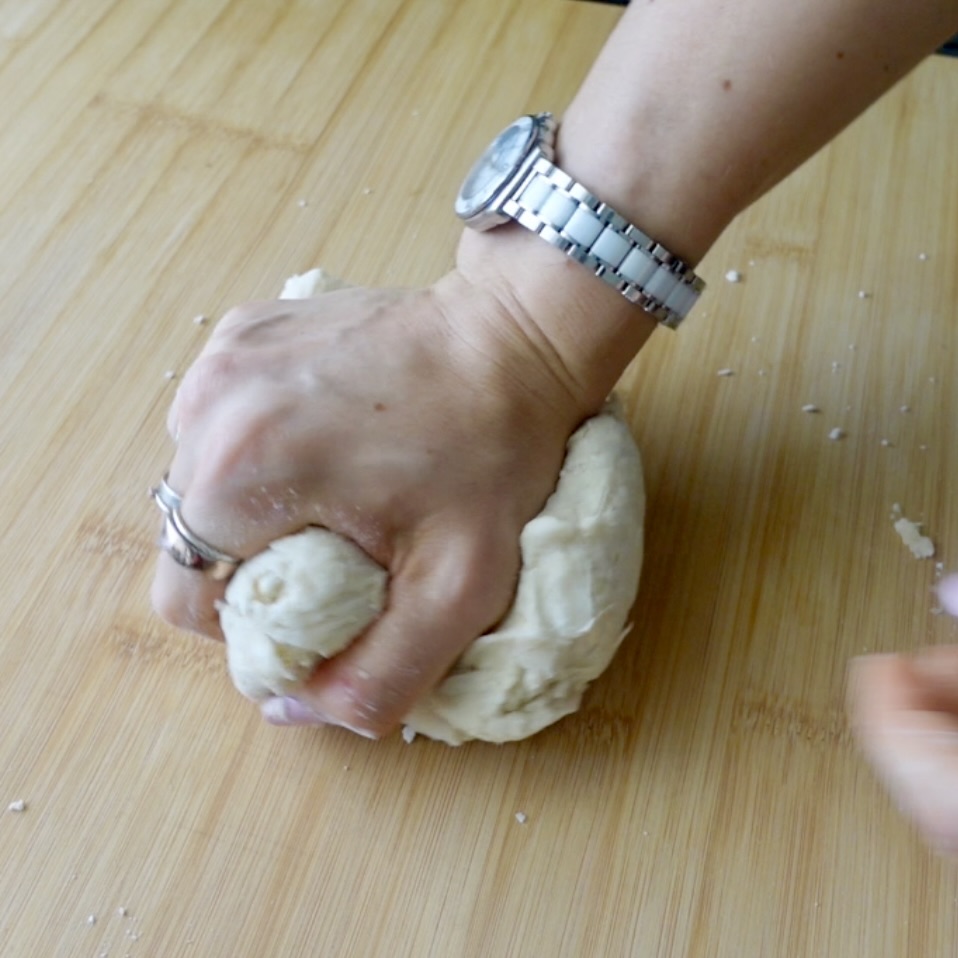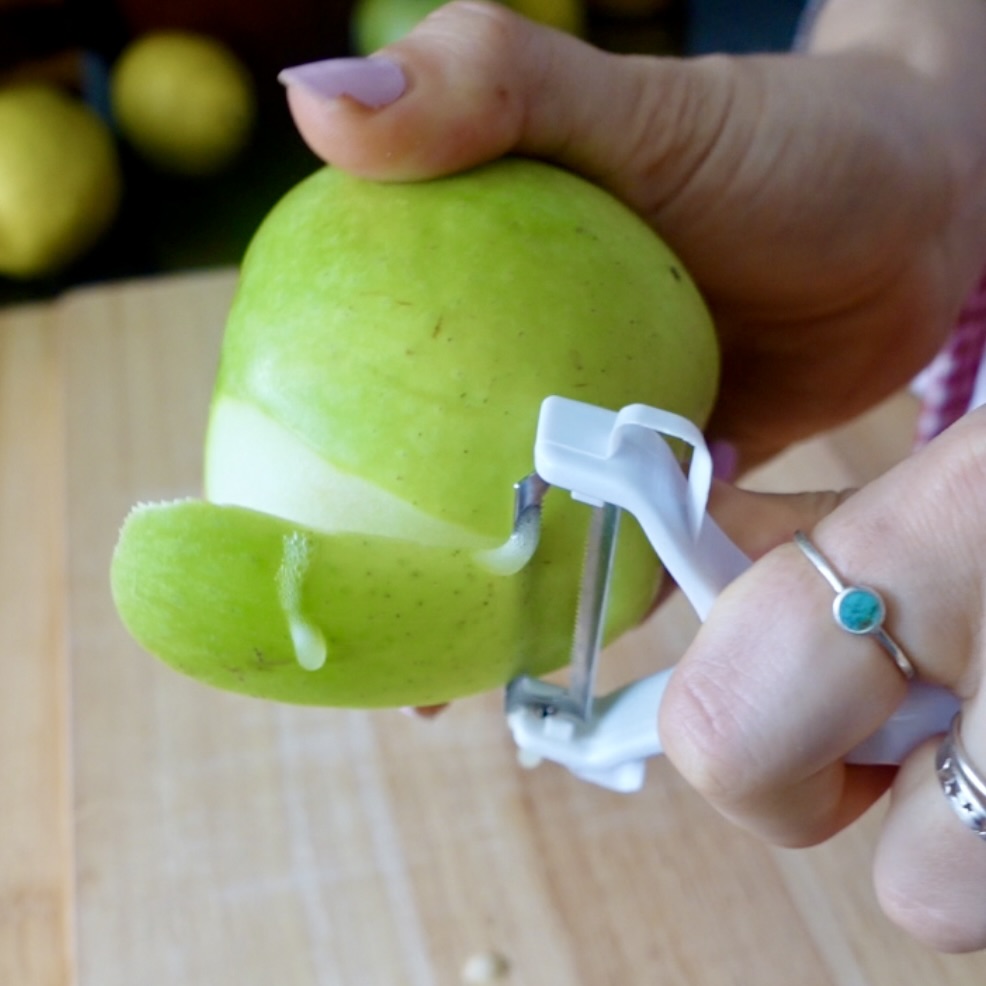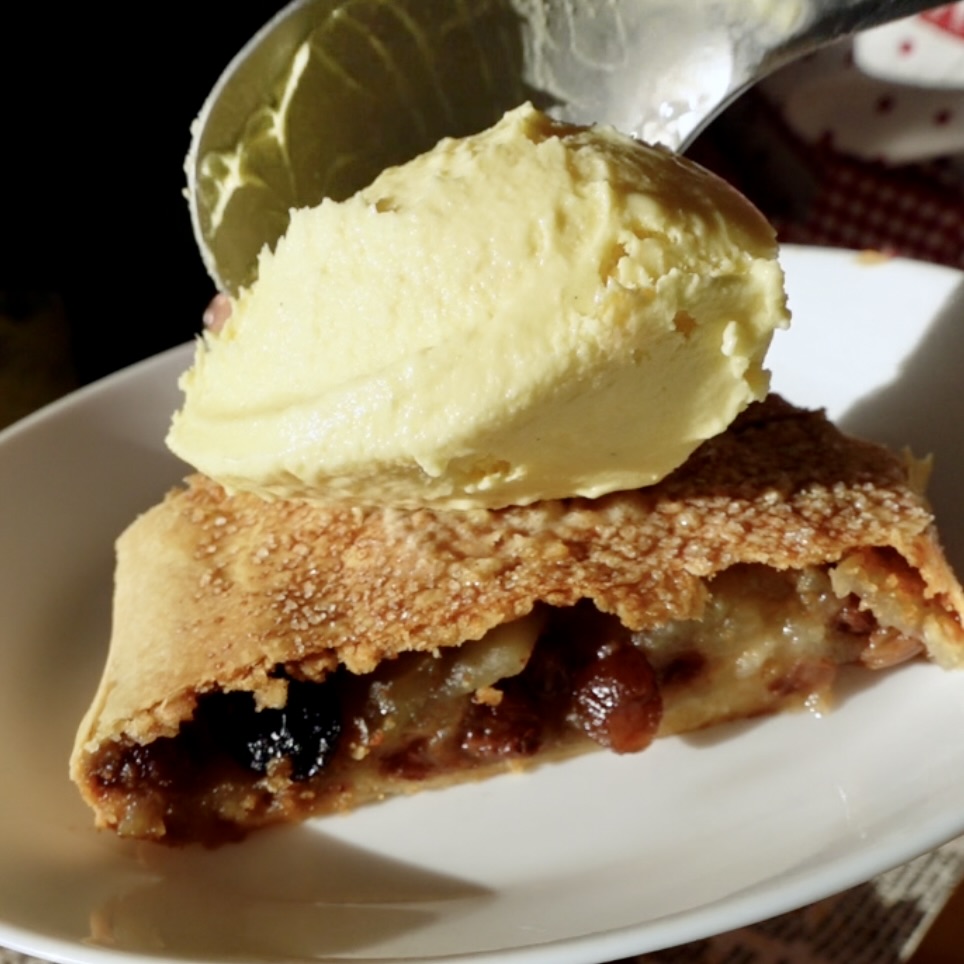
Ingredients
Equipment
Method
- Combine all the ingredients for the dough in a bowl and mix until combined into a shaggy ball.
- Transfer to a lightly floured surface and knead for a few minutes or until the dough is smooth and elastic. A good way to tell if it's done is when pressed with your finger, the indentation should spring back. If it doesn’t, keep kneading.
- Alternatively, you can do this step in a stand mixer and knead it with a dough hook attached.
- Transfer the dough to a lightly oiled bowl and roll it around so it is well coated. Cover the bowl with plastic wrap and set aside to rest for at least 30 minutes, but if you have the time, leave it for an hour to allow the gluten to relax so it's able to be stretched easily.
- When the dough has finished resting, preheat the oven to 180C.
- To make the breadcrumbs, melt 20g of the butter in a fry pan over medium heat. Add the bread and toss the pieces so they get coated in butter then add the hazelnuts. Toss occasionally in the pan until the bread is golden and crisp. Allow to cool slightly then blitz in a food processor until crumbly. Alternatively, you can toss the bread and hazelnuts with melted butter and bake in the oven for 10-15 minutes at 180C.
- Add the apples to a bowl with the lemon juice and sugar and set aside for 15 minutes while you begin the dough. The lemon prevents the apples from browning (oxidising) while the sugar helps draw out some of the moisture. After 15 minutes, drain the excess liquid, if any, and add the soaked raisins and cinnamon. Toss to combine.
- Place the dough on a bench (preferably not the one you'll be covering with a sheet so you don’t need to transfer the dough twice) and roll out as thin as you can with a rolling pin. Cover you work surface with a large, clean sheet and gently transfer the dough on top.
- Being very gentle, slowly stretch and pull the dough from the centre outwards. Keep working the dough by pulling and gently waving the dough by wafting air underneath. You can also lift and shake the dough slightly, allowing gravity to do some of the work. As it gets thinner, you will notice areas that are still thicker than others, so work on them until it is an even transparency. The dough is thin enough when you can see your hand or the pattern of your sheet through it (if the sheet is patterned).
- Using your hand or a pastry brush, spread 60g of the remaining melted butter (or all but a few tbsps of it) over the entire surface of the dough. The amount of butter doesn’t really matter, you're just looking to evenly coat the dough, so feel free to eyeball it if you need a little more of less. Sprinkle over the breadcrumbs and spread again with your hands so it is evenly distributed. Scatter the apple mix over the surface also, making sure you leave roughly a 5cm border of pastry around the edges.
- Fold the top and bottom sides up and over the apples similar to if you were folding a burrito. Fold the end with the shortest length of exposed dough over the apples as well, and using the cloth if you need, lift and roll the strudel into a spiralled log, making sure that the apples stay tucked inside.
- Transfer the strudel to a lined baking tray, seem side down (I do this by sort of flipping it onto my forearm for support and lowering it down). Rub the last of the butter all over the top and lastly sprinkle with about a tbsp of caster sugar.
- Bake for 30-35 minutes or until golden and crisp. Remove from the oven and allow it to rest for 10 minutes. Dust with icing sugar, slice and serve with ice cream or a dollop of cream.
- This authentic Austrian apple strudel (apfelstrudel) recipe is made from scratch featuring homemade strudel dough. The dough can be a tedious process so if you want to make an easier, quicker version, you can substitute puff pastry or filo.
Notes
- If you have a thick border of pastry around the edges after you have finished stretching, just cut it off as it will be tough and chewy in the final bake.
- Make sure your apples are sliced thin and evenly. You want the apples to cook consistently and avoid having some overcooked and some undercooked when it comes out of the oven.
- Take your time with the dough. The first time I made it, I rushed it and I had holes and tears everywhere. It still worked and didn’t really affect the final result, but it certainly isn't as satisfying as having a perfect sheet of paper-thin dough. If you're finding it to be tight and difficult to work. Cover it as best as you can with a damp tea towel and let it relax for 5-10 minutes before trying again.
- You don’t have to use raisins if you really hate them, but they are traditional and personally, I do prefer them.
- The acid in the dough (in the form of vinegar) is there to prevent browning and oxidisation while also helping it become easier to work with.
- If you'd prefer, you can use breadcrumbs instead of making your own from stale bread. You can also use pre-ground hazelnuts (hazelnut meal) if you don’t have or want to use a food processor.

